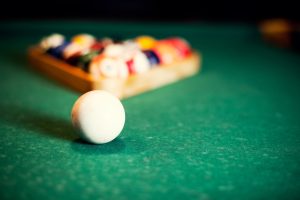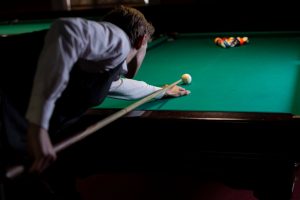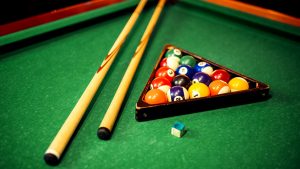
The Science of Billiard Tables: How the Playing Surface Affects Your Shots
Playing billiards, also known as cue sports, is an activity that can be both fun and challenging. However, it is not uncommon for players to feel a sense of frustration when they aim to pocket a ball, only to have it roll off course at the last moment. On the other hand, some individuals possess a natural talent for the game and can make playing billiards appear effortless and entertaining.
Billiards is a popular game that has been enjoyed for centuries. Whether played professionally or just for fun, one important factor that can significantly impact the game is the surface of the billiard table. The surface affects the game in many ways, and understanding the science behind it can help players improve their shots and overall gameplay. Here is a brief overview of the key points to focus on:
- The playing surface of a billiard table significantly affects a player’s shots and overall gameplay.
- The surface of a billiard table is covered with felt, which can wear out over time and negatively impact gameplay.
- The type of cloth used on the table affects the speed of the ball and the amount of spin a player can achieve.
- The construction and dimensions of the table also play a role in gameplay, including factors such as the angle of deflection and rebound.
- Understanding the physics of billiards can help players improve their skills and make more accurate shots.
- Billiards is a great way to learn about concepts such as velocity, force, and energy transfer in a fun and engaging way.
The surface of the Billiard table:
Billiard tables are typically constructed with a playing surface made of slate, a fine-grained rock that has been used for over a century due to its durability, stability, and consistent playing surface. The slate is cut into three or four pieces, depending on the table’s size, and then joined together to create a level playing surface. However, the surface of the billiard table is not perfectly smooth and has a slight curvature to it, also known as “crowning.” This curvature is essential to ensure that the balls roll toward the pockets. Without it, the balls would roll toward the centre of the table, making it difficult to pocket them. Additionally, the crowning of the table helps to minimise the impact of any imperfections on the playing surface. Even the slightest irregularities in the slate can cause the balls to roll in different directions, which can significantly affect the outcome of the game. By crowning the table, these imperfections are reduced, ensuring that the balls roll as smoothly as possible.
The cloth covering of the playing surface.
Typically made of wool and nylon, the cloth covering the billiard table’s playing surface serves to provide a smooth surface for the balls to roll on. However, the cloth also plays a significant role in how the balls react when struck by the cue. The thickness of the cloth can have a significant impact on the game’s speed and trajectory, and different types of cloth can be used to adjust these factors. For instance, the slower cloth is typically used for beginner players to offer better control of the ball’s movement, while the faster cloth is used for more advanced players who need to make more precise shots. Additionally, the texture of the cloth also affects the game. A rougher texture can cause the balls to slide more, while a smoother texture can cause the balls to spin more. Spin is a crucial factor in the game, allowing players to control the ball’s trajectory and hit other balls at various angles.
Table’s pockets
The game’s outcome is significantly influenced by the pockets of the table, which is another factor to consider. The size and shape of the pockets play a crucial role, as they can either make it easier or more challenging to make shots. For instance, larger pockets provide a wider opening for the balls to go in, making it easier to pocket them. Conversely, smaller pockets necessitate greater precision and accuracy in shot-making.
Apart from their size and shape, the angle of the pockets also affects the game. Typically, the pockets are angled towards the center of the table, making it simpler for balls to roll into them. If the pockets were angled away from the center, it would be much more difficult to pocket balls, posing a challenge for players.
The Balls
The game can also be influenced by the balls used. Phenolic resin is commonly used to make billiard balls because it is sturdy and uniform in weight and size. Nevertheless, the condition of the balls can impact their performance on the table.
As they age and wear, the surface of the ball can become smoother, causing them to roll less predictably. In contrast, newer balls tend to have a more textured surface, providing a better grip on the cloth and enabling them to spin more easily.
To sum up, the quality of the slate surface, cloth covering, pockets, and balls all play an integral role in determining the outcome of the game. A comprehensive understanding of the table’s surface can help players improve their shots and overall gameplay, allowing them to adjust their shots to compensate for any imperfections and play with greater accuracy and precision. For players looking for high-quality pool tables in the UAE, Dubai Snooker is the ultimate destination for the best pool accessories. We offer an extensive range of premium accessories, cue sticks, and billiard tables in Dubai to meet players’ needs and preferences. Dubai Snooker has everything you need to elevate your game and enjoy playing pool to the fullest. Connect with us today to get a better pool game experience!








